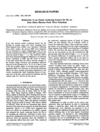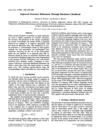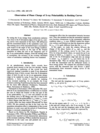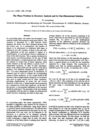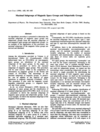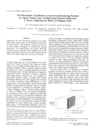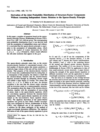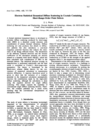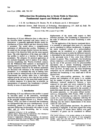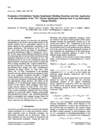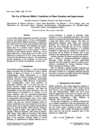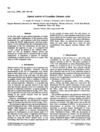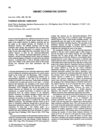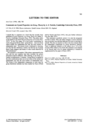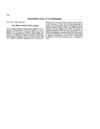issue contents
September 1996 issue

Cover illustration: Indicatrix of the inverse of Young's modulus for ADP, a tetragonal crystal. Courtesy of A. Authier, Laboratoire de Minéralogie-Cristallographie, Université Pierre et Marie Curie, Paris, France.
research papers
Relativisitic X-ray and electron scattering factors for first- and second-row atoms and ions are tabulated. The present results are based on multiconfiguration Dirac–Hartree–Fock calculations which have the correct non-relativistic limit and will allow relativistic contributions to the scattering factors to be extracted properly.
Maximum-likelihood refinement can improve a protein structure more than twice as much as least-squares refinement.
By measurement of the change of asymmetry of the transmitted rocking curves for GaAs 200 diffraction near K-absorption edges, the phase change of the structure factors was examined.
A new approach to the one-dimensional solution of the phase problem in diffraction is given, introducing periodic Fourier transforms of shift functions.
A method is given for the derivation of the maximal subgroups of magnetic space groups and subperiodic groups.
Dynamical effects in high-energy electron diffraction were observed in sphalerite, ZnS. The structure factors of lower angle were measured.
The practicality of extrapolating multiple-wavelength single- crystal intensity measurements to zero wavelength for extinc- tion-correction purposes is investigated.
Expressions for the electrostatic potential at an interfacial space charge layer are determined using classical electrostatics, with particular reference to the use of phase-contrast techniques in transmission electron microscopy for characterizing such layers. Both the sensitivity of the potential to the detailed form of the charge distribution and the effect of the internal electric field on the strain within the material are discussed.
A number of equations based on the sparse-density principle are derived, along with the corresponding j.p.d.'s, and the effect of the assumption of independent atoms is investigated.
A formal statistical dynamical theory is developed to calculate Bragg and diffuse scattering produced by short-range order (SRO) in a distorted crystal structure with consideration of atomic thermal vibrations. A rigorous proof is given to show the inclusion of a complex potential in the dynamical calculation automatically recovers the contributions made by the high-order diffuse scattering, although the calculation is done using the equation derived under the distorted-wave Born approximation.
Diffraction-line broadening due to strain fields in materials is discussed. A generally applicable model for distributions of lattice defects and their distortion fields is presented.
Values for the electric field gradient at the iron nucleus from the X-ray charge density and from Mössbauer spectroscopy are compared to obtain the 57Fem nuclear quadrupole moment. Sternheimer shielding and antishielding factors are derived and used to account for core-polarization effects.
A model-independent procedure for phase extension and improvement, based on the discrete Hilbert transforms, is presented.
As the first study on gyro-optical properties of amino acids, temperature dependences of gyration tensor components of L- and D-glutamic acids were measured using the high-accuracy universal polarimeter (HAUP).
Free 

The nomenclature and symbols to be used in discussing the parameters that describe dynamic and static displacements of atoms in crystals, as determined from Bragg diffraction data, are considered in detail. The emphasis is on parameters derived from the Gaussian approximation.
short communications
The combined molecular replacement protocol performs a limited six-dimensional search to find molecular replacement solutions.
letters to the editor
Free 

Nowick's book is criticized for a mis-statement in its preface about previous work on group theory.
international union of crystallography
Free 



 journal menu
journal menu









